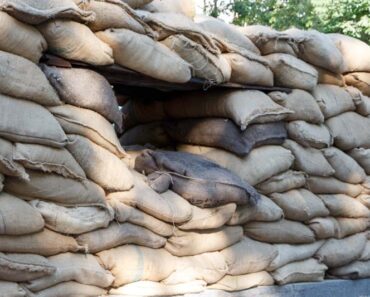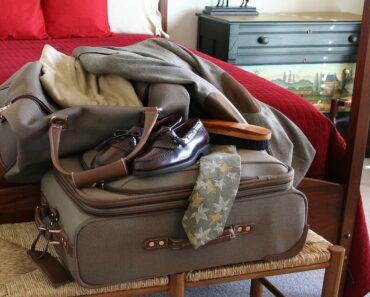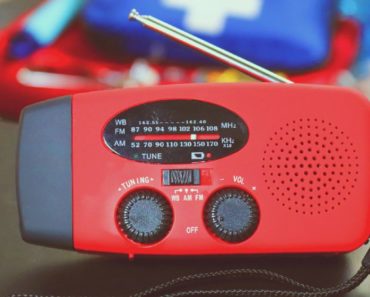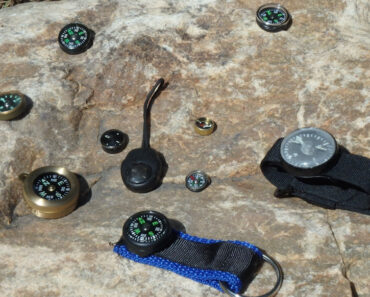If you put together your own medical kit more than five years ago, it may be time to update its contents. Even if you have not used the kit extensively, some items may have reached their expiration dates, and new technology may be available to improve the efficacy of your medical supplies. Additionally, if you have changed your medical needs or your environment has changed, you may need to add or remove items from your kit.
It is important to take the time to review your medical kit to ensure that it is up to date and contains all the necessary items for the current situation. A medical kit can be a crucial resource in emergency situations, and it is essential that its contents are properly maintained.
You check your food supplies and bug-out gear on a regular basis (or at least you should be doing so), and you are removing, replacing, or adding new stuff constantly, so why aren’t you updating your medical kit as well?
Hopefully, this article will bring some awareness, and you will discover what contents from your medical kit you should focus on. You will eventually figure out which items need to be removed, or replaced based on their expiration date or general condition (damaged, outdated, etc.). Take the time now to review its contents so that you won’t be sorry later on.
Medication
Over-the-counter medications commonly found in medical kits can have varying expiration dates. Each medicine should be carefully checked because their expritation date vary based on the manufacturer and of course. I’ve noticed that, some types of medications tend to expire more quickly than others.
One example is acetaminophen, which is a pain reliever and fever reducer commonly used in medical kits. Acetaminophen typically has a shelf life of around three years. After this time, it may start to degrade, lose potency, and become less effective.
Another example is ibuprofen, which is another common pain reliever and fever reducer found in most medical kits. Ibuprofen typically has a shelf life of around four years. However, just like acetaminophen, it will lose potency over time and become less effective.
It is important to note that expired medications may not only be less effective but could also be harmful in some cases. For example, expired medications could potentially cause adverse reactions or even be toxic if their chemical composition has changed significantly.
Therefore, it is crucial to regularly check the expiration dates of medications in medical kits and replace any that have expired. It is also recommended to store medications properly, such as in a cool, dry place, to help extend their shelf life.
Should you take expired medication?
This is a highly debated topic amongst preppers and survivalists, and there are various opinions being thrown around.
In general, it’s not recommended to take expired medication, as the safety and effectiveness of the medication cannot be guaranteed. The expiration date on a medication indicates the time frame during which the manufacturer can guarantee the full potency and safety of the medication.
After the expiration date, the potency and safety of the medication may start to decline, and the medication may not be as effective in treating the condition it was intended for. In some cases, taking expired medication could even be harmful or toxic, and the changed chemical composition can even lead to serious allergies, which will make your situation even worse.
In a survival scenario where access to medical care and supplies is limited, taking expired medication may be necessary as a last resort. Even so, one must understand that there are certain risks and limitations of using expired medication and this approach may not be the safest bet.
As mentioned before, expired medication may not be as effective in treating the condition it was intended for and could even be harmful or toxic. Therefore, it is important to only use the expired medication if there are no other options available and if the potential aid outweighs the potential risk.
If you must use expired medication in a survival situation, here are some tips:
- Inspect the medication carefully and check for any signs of damage, such as discoloration, odor, or changes in texture. If the medication looks or smells different than it should, it may not be safe to use, even if it hasn’t reached its expiration date.
- Use the medication sparingly and only when absolutely necessary to conserve supplies and reduce the risk of potential harm.
- Monitor for side effects and check your body’s reaction to the medication and be aware of any potential side effects. If you experience any unusual symptoms, stop using the medication immediately and seek medical attention if possible.
Also note that using expired medication in a survival situation is not ideal and should only be done as a last resort. If possible, it is always best to seek medical attention and use medication that is within its expiration date.
Dressings
If you have a medical kit that’s been sitting around for a while, chances are that some of the contents have deteriorated over time. This is especially true for items like Band-Aids and gauze, which can lose their sterility and effectiveness if left unused for too long.
If you have Band-Aids in your kit, it’s important to check their condition. Over time, the wrappers can fall apart, and the Band-Aids can stick to other items in your kit, compromising their sterility. One option to consider are the Band-Aids which are lined with antibiotics (such as Neosporin). These are ideal for a wilderness environment because they reduce the risk of secondary wound infection. Additionally, check for those with water block covering if you believe they will be needed in wet environments.
Gauze is another important item to check in your medical kit. Those that store 4×4 gauze wraped individually should know that these packages may have come apart over the past five years, compromising their sterility. Since gauze is relatively inexpensive, it’s important to replace any packages that have been compromised to ensure that you have sterile gauze available for wound cleaning and care.
For those who carry Israeli dressings or similar products, it’s important to inspect the outer packaging to ensure that it hasn’t been compromised. While these dressings are generally sturdy and are guaranteed to withstand a decent amount of wear and tear, it’s still important to check them every now and then to make sure that they are still intact and in good condition. Also, consider the fact that improvements to these dressings were made over the years, so it may be worth upgrading your stock to take advantage of these improvements.
Finally, chest seals are an important item to consider when putting together a medical kit. While any chest seal will do the job, it’s now recommended that you carry vented chest seals since these are the best recommendation for use on all open chest wounds. Keeping up with these kinds of advancements can help ensure that your medical kit is as effective as possible in a survival situation.
Wet wipes
Wet wipes can be a useful addition to a medical kit for cleaning wounds or for personal hygiene in a survival situation. However, like other items in the kit, wet wipes can also expire or degrade over time, which can reduce their effectiveness.
Most wet wipes have a shelf life of about two years from the date of manufacture. After that, the effectiveness of the cleansing solution may decrease, and the wipes may become dry or brittle. It is equally significant to check the expiration date on the packaging of the wet wipes in your medical kit and replace them if they have expired or if they appear dry, discolored, or have a strange odor.
Besides checking the expiration date, it is also crucial to consider the specific use of the wet wipes in your medical kit. For example, if you plan to use them for wound cleaning, you may want to consider wipes that are specifically designed for this use, such as antiseptic wipes. These types of wipes contain ingredients like alcohol or hydrogen peroxide that can help kill bacteria and prevent infection.
When replacing wet wipes in your medical kit, it may be a good idea to also consider the size and packaging of the wipes. Individual packets or small resealable pouches can be more convenient for carrying in a survival kit or on a hike, while larger containers may be more suitable for use in a home or vehicle emergency kit. Additionally, it may be helpful to choose wipes that are fragrance-free or hypoallergenic if you or someone in your group has sensitive skin.
Tourniquets
Tourniquets are one of the most important medical devices in a first aid kit, especially in a survival situation. It is imperative to have a reliable and updated tourniquet in your kit. If you have not updated your tourniquet in the past five years, it is recommended that you replace it with a new one.
Over time, the stitching on the tourniquet can degrade, and the Velcro can become worn out or damaged. This can compromise the effectiveness of the tourniquet, which can have dire consequences in an emergency situation. In addition, newer generations of tourniquets have been developed with enhanced features that improve their functionality, ease of use, and effectiveness.
Please keep in mind that using an outdated tourniquet can lead to serious complications, such as nerve damage, loss of limb, or even death. Therefore, it is crucial to invest in a new tourniquet and dispose of the old one, or use it strictly for training purposes to avoid any risks in a life-threatening situation.
When shopping for a new tourniquet, it is important to consider its features, such as ease of application, durability, and effectiveness. Some newer tourniquets also come with additional features, such as a windlass rod or buckle, which can improve the application process and provide more accurate pressure. It is recommended to do your research and choose a tourniquet that is suited to your needs and situation.
Having an up-to-date and reliable tourniquet in your medical kit will save your life or the lives of others in a survival situation. It is crucial to replace outdated tourniquets every five years and invest in a newer, more advanced version to make sure your safety and the safety of others is well covered.
Splints
Splints are an essential component of any medical kit or first aid kit, especially if you spend most of your free time in the wilderness, as they are used to immobilize broken or injured bones to prevent further damage and promote healing. However, like any other medical equipment, splints can also expire and become less effective over time.
The lifespan of a splint depends on various factors, such as the material it is made of, how it is stored, and how frequently it is used. Generally, most splints have a shelf life of three to five years. However, some newer splint materials may last longer, and SAM splints are my recommendation.
It is important to inspect your splints regularly to ensure that they are still intact and in good condition to functioning properly. If your splints are showing signs of wear and tear, such as cracking or breaking, or if they have been exposed to extreme temperatures or moisture, they should be replaced immediately.
In addition, if you have used a splint to treat a broken bone, it should be discarded and replaced afterward. This is because the splint may have become contaminated with boddly fluids or blood, which can harbor harmful bacteria and increase the risk of infection.
When replacing your splints, think of the specific needs of your kit and choose splints that are appropriate for your intended use. There are many different types of splints available, including pre-formed and moldable options, and some may be better suited for certain injuries or situations than others.
Medical tools
Along with medicine, dressings, and tourniquets, there are several medical tools that should be checked and replaced in a first aid kit periodically. Here are some suggestions:
Scissors are a key tool in a first aid kit, and they should be checked to ensure that they are still sharp and in good working condition. Dull scissors can make it difficult to cut through bandages or clothing, and they can even cause injury if too much force is required to cut. If your scissors are dull or damaged, it’s time to replace them.
Tweezers are another essential tool in a first aid kit, especially for removing splinters, ticks, or other foreign objects from the skin. Make sure your tweezers are still sharp and have a good grip. If they are damaged, or the tips are misaligned, it’s time to get new ones.
If your first aid kit includes a thermometer, check the battery to make sure it’s still working. I’ve been told that it’s a good idea to replace the thermometer if it’s been several years since it was last used it. This recommendation was made based on the fact that some older thermometers may not be as accurate.
A penlight can be useful for examining wounds or checking for signs of head injuries or other medical conditions. Check to make sure the bulb is still working, and replace the batteries if necessary.
A CPR mask can be used to administer mouth-to-mouth resuscitation without direct contact with the patient’s mouth. Check to make sure the mask is still in good condition and the one-way valve is functioning properly. Replace the mask if it’s been several years since it was last used.
Consider smaller medical kits
Med pouches are a compact and portable alternative to traditional medical kits. They are designed to hold the essential medical supplies and equipment needed in emergency situations and are commonly used by law enforcement agents, military personnel, and first responders.
They are made of durable materials such as nylon or ballistic fabric. Med pouches are designed to be worn on the body or attached to a backpack or other gear, allowing for easy access to critical medical supplies in the field. They allow for faster and more efficient access to critical medical supplies in emergency situations, as they can be quickly deployed and accessed without the need to search through a larger medical kit.
The contents of a med pouch will often vary based on the intended use, but will most times, include items such as tourniquets, hemostatic agents, bandages, gauze, scissors, and gloves. Some med pouches also include specialized medical equipment such as airway management tools, chest seals, or decompression needles.
However, med pouches do have some limitations. Due to their smaller size, they may not be able to hold as many medical supplies as a traditional medical kit. They also may not be as versatile, as they are typically designed for specific use cases and may not be able to accommodate a wide range of medical emergencies.
Concluding
Regularly checking and updating your medical kit is crucial to ensure that it is always ready to use in case of an emergency. Over time, items in the kit can expire or lose effectiveness, and wear and tear can compromise their function. By replacing and updating items, such as medications, bandages, and tools, you can maintain the kit’s usability and potentially save a life when it matters most.
Additionally, consider alternative options like med pouches and new medical technologies that can enhance the effectiveness of your emergency medical response. Remember to routinely check and update your medical kit to stay prepared for any situation.




























